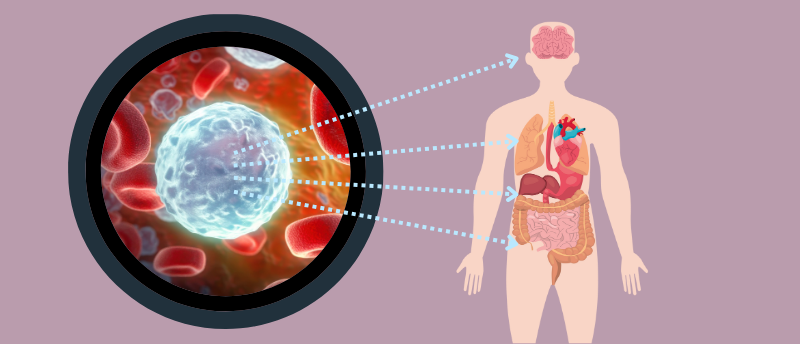A giant leap for long COVID diagnosis

Researchers may have found the key to unlocking a molecular diagnosis method for long COVID.
Piggybacking off an ongoing clinical trial, a team of researchers from City of Hope and the Lundquist Institute (Both CA, USA) have used mass-spectrometry-based techniques to identify a potential biomarker for long COVID. If the potential biomarker is confirmed, it would be the first quantifiable molecule specific to long COVID that could be used in diagnostic tests.
Though it was observed and reported by patients during the first phase of the COVID-19 pandemic, long COVID did not receive widespread clinical and public attention until its later stages. While definitions have been drawn for the condition, diagnosis remains limited to the summation of a group of symptoms. As the study’s senior author and Lundquist investigator William Stringer explains, “If a patient arrives in clinic and they relate the persistence of typical signs and symptoms of long COVID, 12 weeks or more after COVID -19 infection, I give them a presumptive diagnosis, but I don’t have any blood tests or biomarkers to confirm this diagnosis.”
Theories abound for the causes of long COVID, from SARS-CoV-2 reactivating latent infections of other viruses to triggering autoimmune diseases. However, a growing body of evidence supports the theory that aspects of the virus persist in various tissues of the body long after acute infection has subsided, continuing to stimulate an array of symptoms.
The researchers proposed that – as extracellular vesicles (EVs) have been observed to contain viral RNA and proteins after infections with different viruses, triggering inflammation and potentiating viral replication – EVs containing SARS-CoV-2 fragments could be used as a biomarker for long COVID. “We thought that maybe if the virus is circulating or moving in the body, we should try to see if EVs are carrying those viral fragments,” first author Asghar Abbasi explained.
You may also be interested in:
The study
As Abbasi and Stringer were already running a clinical trial investigating the role of EVs in the changes observed in immune function following exercise and post-exertional malaise, a common symptom of long COVID, they decided to integrate this investigation into a small part of this ongoing trial.
They collected 56 serum samples from 14 patients in their cohort with persistent long COVID over a 12 week period featuring an aerobic exercise program. After isolating the EVs from samples, mass-spectrometry-based proteomic techniques were deployed to analyse the samples. Identified peptides were screened against the SARS-CoV-2 proteome in Uniprot and EV samples were queried against a SARS-CoV-2 spectral library in Spectronaut using default parameters.
The team identified 65 different fragments of the SARS-CoV-2 protein Pp1ab, an RNA replicase enzyme essential to the virus’s replication and specific to the virus. Fragments of this protein were identified in samples from all 14 patients, but not in each sample analyzed.
Points to consider
While the proteins seeming ubiquity and specificity marks it a promising potential biomarker, the team are yet to understand why it wasn’t detected in every sample, theorizing that the exercise may have impacted the production or release of viral particles, or that there may simply be different timepoints at which the proteins are present in high enough concentrations to be detected.
Stringer highlights another key limitation, “We haven’t run [our tests] on people without long COVID symptoms who are currently, or who were, infected with COVID.” This raises the question: are the protein fragments observed the remnants of cells “taking out the trash” from infected cells or are they the result of active replication?
However, if the team are able to validate this biomarker candidate, it will represent a huge step forward for the diagnosis of long COVID, bringing much-needed clarity to an otherwise nebulous condition.
